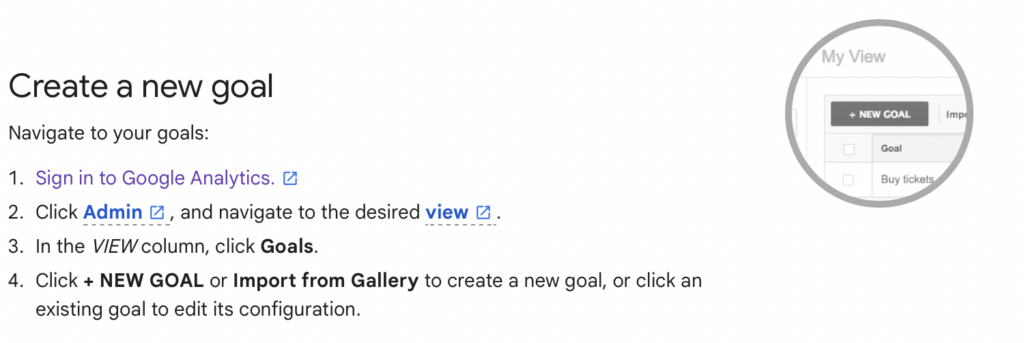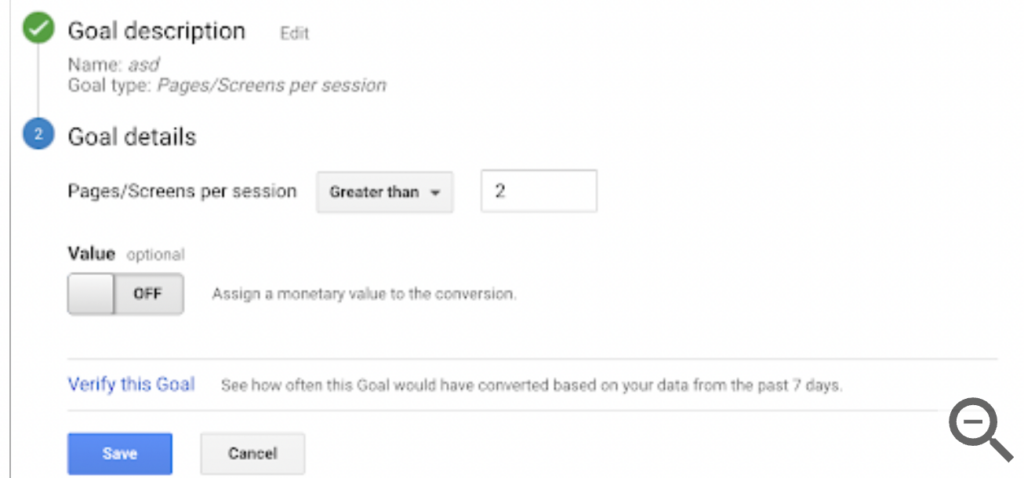What Data is Google Analytics Goals Unable to Track Right Now?

When you buy something through one of the links on our site, we may earn an affiliate commission.
If you have a website, you already know that it is crucial to track the engagement of your users. For many business-based reports, Google Analytics is a powerhouse of information and data review. But their Goals function may not give you the access you need to stay on top of things. What data is Google Analytics Goals unable to track?
If you are wondering what the limitations are of this free software, you might be surprised to learn that it misses the mark on one very important metric.
Learn more about what to expect from your Google Analytics Goals (and what you can track instead).
Let's dive in!
Contents
What is Google Analytics Goals?

Before we dive into what data Google Analytics Goals is unable to track, it's important to have a good idea of what this actually does. The Goals function of Google Analytics is a robust way to measure a website's conversion rate.
Site owners get to identify what user interactions count, including things like pages viewed each session, the duration of a session, and any actions you may want them to take.
These goals are easy to set up and can open wide the door to your conversions. Your customers will become more than just a number when you are able to harness the complete metric included in this platform, measuring how valuable different users truly are.
If you're a blogger, be sure to check out our guide to Google Analytics for bloggers here!
What Data is Google Analytics Goals Unable to Track?
For most people, Google Analytics provides a wealth of knowledge that can help them set accurate goals for their business, blog, or other venture.
The problem is Google Analytics Goals can't reliably track everything. First and foremost, it's important to note that it can track data only from the time you connect it to your website.
Apart from this caveat, what data is Google Analytics Goals unable to track?
From here, you'll find that it's missing one very important function: a customer's lifetime value.
Customer Lifetime Value

While dealing with lots of data, Google Analytics is going to have a very hard time generating a lifetime value report. They can really only track user behavior on your website.
For example, they know when someone clicks a link from your email newsletter, how long they spend on your site, and how many times a day someone visits.
Customer lifetime value is a different type of metric that doesn't rely on the same historical data.
When Google is collecting data, it can pinpoint how people are interacting with your pages. A customer's lifetime value would show up differently on a Google Analytics report.
It isn't just a number for Google Analytics Goals to track. Instead, it would require more metrics than can be tracked via Goals. Instead, you would need the Lifetime Value Report, which can reveal some of these metrics.
You can access the Lifetime Value Report via Google Analytics Reports.
How to Measure Customer's Lifetime Value Instead

While Google Analytics tracking under their Goals function may not be able to account for the lifetime performance of a client or how valuable different users are, that doesn't mean you can't track this data.
A particular business might want to know the complete metric, which is where the Lifetime Value Report comes into the picture.
Here, you can start to identify the patterns in your Google Analytics data.
With Goals unable to track this complete metric, it doesn't mean you have to miss out on the lifetime performance of your search engine optimization or lead acquisition efforts.
The Lifetime Value Report details your acquisition date range as well as these other metrics:
- App views or page views per user
- Goal completions
- Revenue and transactions per user
- Session duration and number of sessions per user.
Learn what a metric is in Google Analytics here.
What Does Google Analytics Goals Track?
With all of the information regarding what Google Analytics doesn't track out of the way, you may be wondering what it does track.
There are four key areas you can utilize beyond lifetime value as you track goals in their reporting view.
Revenue

For many businesses, the total amount of money they bring in every month is crucial to keeping the wheels on their company.
The Google Analytics Goal report lets you see just how much money you earn via completed transactions and preorders.
Keep in mind that tracking goals in this way is a bit more difficult as a user may not make a purchase the first time they interact with your site. In other words, revenue is just a number that may not be related to your total sessions, clicks, and more.
While you should measure it, you will also want to take a look at the other possible goals.
Acquisition

After setting up a revenue goal, an acquisition report lets you pinpoint how many people are likely to become customers over time.
For example, it might clue you in to how many people signed up for an email newsletter, notifications about an upcoming release, or even created an account for shopping.
Why does client acquisition matter so much?
For many people, it's an indicator that they are likely to return in the future. Whether they want you to notify them of new products and services or they create a shopping cart, it opens the door to a future interaction in which you might make money.
Inquiry

Sometimes, a business bases its entire model not on e-commerce but on services provided to local clients. In this case, you wouldn't have the same acquisition functions listed above because they are not making sales on your website.
This is where your inquiry data can come in handy.
Inquiries are measured when someone takes a quick peek at your contact information, location, and email address, or even submits a form requesting more information from you.
Among the data Google tracks, you can also identify how many people are utilizing live chat and reading reviews.
It might not be as solid as acquisition, but inquiry is an important piece of the puzzle. Inquiry moves a customer one step closer to engagement and a sale.
Engagement

Maybe you have an excellent video explanation of your services on your website, or you want people to download your mobile apps.
Perhaps you want people to share your content on social media or start to compare your various product or service offerings. All of this can be tracked in Google Analytics Goals.
What kind of hits does Google Analytics track? Learn more here!
Much like inquiry goals, engagement is an important report that lets you see the potential for any of your customers to close a sale and may even show you where they drop off before making a purchase.
Final Thoughts: Measuring Goals with Google Analytics
What data is Google Analytics Goals unable to track? There is really only one aspect of your business that can't be monitored via this robust platform: customer lifetime value. This single number is crucial for your analytics, but accessing it will require a bit of a workaround.
On the other hand, there are some real benefits to the data Google offers to businesses. Follow these guidelines to set more goals for your business, and keep tabs on how your progress is shaping up!
Don't forget to follow these best Google Analytics blogs for more details!
Want to learn step-by-step how I built my Niche Site Empire up to a full-time income?
Yes! I Love to Learn
Learn How I Built My Niche Site Empire to a Full-time Income
- How to Pick the Right Keywords at the START, and avoid the losers
- How to Scale and Outsource 90% of the Work, Allowing Your Empire to GROW Without You
- How to Build a Site That Gets REAL TRAFFIC FROM GOOGLE (every. single. day.)
- Subscribe to the Niche Pursuits Newsletter delivered with value 3X per week
My top recommendations
















